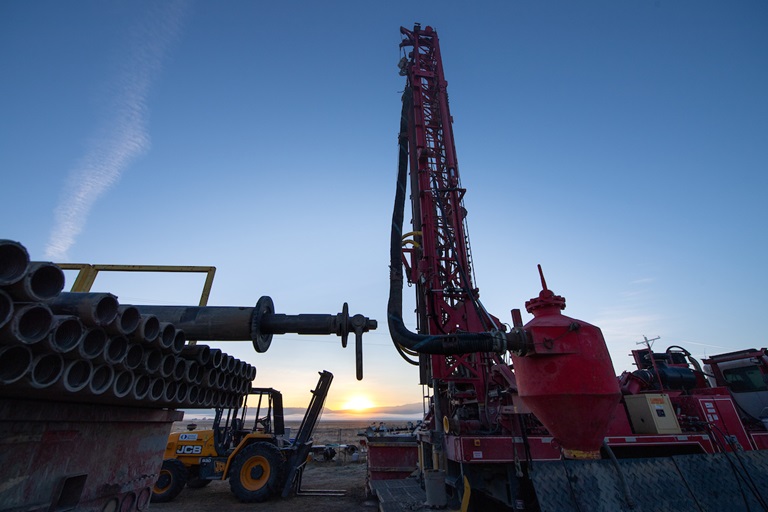Monitoring Wells: DWR Helps Locals by Installing ‘Eyes Underground’
A drilling rig continues work on a monitoring well as part of the Sustainable Groundwater Management Act (SGMA). DWR/2019
Groundwater is a life-giving resource located beneath our feet. It provides drinking water for millions of Californians, irrigation water for farmers who grow our food, and supplies numerous communities with their entire water supply. But its hidden nature makes it challenging to manage and understand.
The Sustainable Groundwater Management Act, passed in 2014, requires locally formed groundwater sustainability agencies (GSAs) to create 20-year plans, called groundwater sustainability plans (GSPs). These plans map out how GSAs will manage their groundwater for long-term sustainability, which can be challenging when there isn’t a clear understanding of the movement, depth, quantity, quality, and interaction of groundwater with surface water in a basin.
To help fill in this missing information, the Department of Water Resources (DWR) works with local water agencies to install groundwater monitoring wells. Unlike water production wells, monitoring wells do not remove groundwater, but instead use one or more small diameter pipes placed anywhere from 50 feet to 2,000 feet deep. The pipes house electronic equipment that continuously measures groundwater level information. Groundwater samples can also be manually collected from these wells to check for water quality.
“You can’t see groundwater before it’s pumped. Monitoring wells are our eyes to see what is going on,” said Bill Brewster, DWR senior engineering geologist.
Constructing monitoring wells is part of the technical assistance DWR provides to help GSAs. DWR first partners with GSAs to identify their goals and determine well locations. DWR then hires drilling contractors to install the wells. GSA staff are responsible for collecting data from the completed wells and sharing it with DWR and the public for at least 20 years.
In the last two years, DWR has installed 53 monitoring wells at 24 sites as part of its technical support to GSAs. Over the next several years, DWR plans to construct at least 124 more monitoring wells at 67 sites for total drilling contractor costs of about $9.2 million. These projects are funded by DWR and voter-approved Proposition 68.
“Monitoring wells are constructed to collect scientific information such as the depth and quality of groundwater to help understand how it moves within the basin – information vital to managing the basin’s groundwater resource,” said Jason Preece, a DWR senior engineering geologist who oversees the installation of monitoring wells for the department’s Sustainable Groundwater Management Program.
According to Preece, each monitoring well is designed for a specific purpose. DWR recently worked with Sonoma County to install 21 groundwater monitoring wells that provide new information about the relationship between groundwater aquifers and surface water in creeks, streams and rivers.
Monitoring wells were also installed in the Oxnard area to measure groundwater and salt levels in order to assess and manage seawater intrusion into the basin. Seawater intrusion can make the water undrinkable and unusable for irrigation.
Other important uses for monitoring wells include:
- Establishing trends over time to ensure groundwater levels are not chronically lowered.
- Determining changes to the amount of groundwater stored in the aquifer. Groundwater storage is important because it provides a buffer during droughts when surface water supplies are limited.
- Monitoring the potential for subsidence which is when the ground surface sinks. Subsidence can damage canals, levees, bridges, roads and buildings.
- Collecting water samples to determine the concentrations of contaminants, such as harmful chemicals that can degrade water quality and make it unfit for drinking or irrigation.
Groundwater monitoring wells provide important “eyes underground” that benefit all Californians and allow the collection of useful scientific information about this precious resource.
For more information on DWR’s groundwater monitoring and management activities visit the Groundwater Management webpage.
